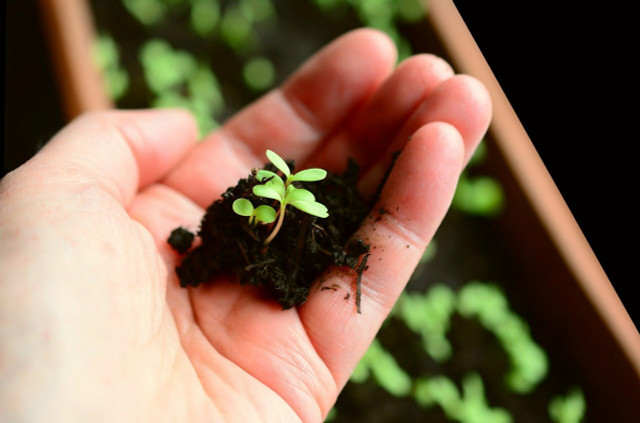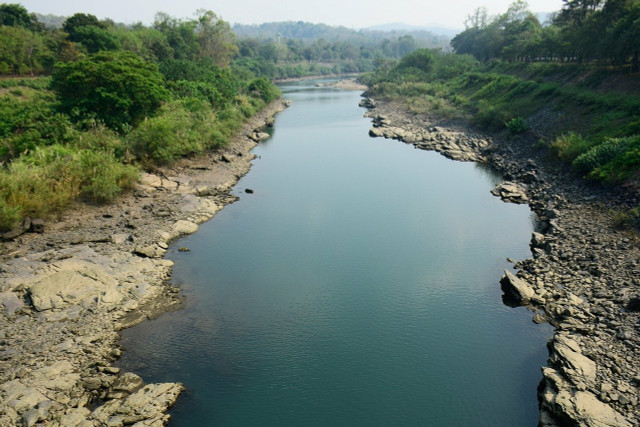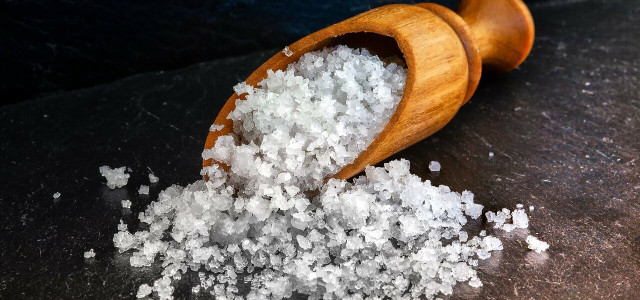You may have used it in the bath, but is Epsom salt an option for gardening as well? We’ll explore whether Epsom salt is safe for plants and when you should use it.
Epsom salt (magnesium sulfate) may share a similar appearance with table salt (sodium chloride) – but it is a completely different compound. Both salts are naturally occurring and can be likewise mined or boiled down from mineral spring waters. Unlike table salt, which will kill plants, Epsom salt for gardening is used to amend soil. Most Epsom salt sold in the USA is synthetically produced by combining magnesium and sulfate.
Ever since its discovery in the spring waters in the town of Epsom, England, Epsom salt has been touted for multiple curative properties. Although much of the hype is anecdotal, there are some benefits to using Epsom salt:
- The most common is as a bath salt or an Epsom salt foot soak, which is said to soothe aches and pains or lower swelling.
- Epsom salt can be used to supply necessary magnesium, which may aid in higher quality sleep, stress relief, and production of the sleep hormone melatonin.
- Epsom salt is often used as a laxative. The mineral is considered essential for optimal metabolic function.
- Epsom salt may help relieve muscle soreness and help you recover from exercise.
Why Use Epsom Salt While Gardening?

(Foto: CC0 / Pixabay / congerdesign)
Similarly with all of the benefits of magnesium for human health, the magnesium and sulfate in Epsom salt can also lead to a healthier garden. That being said, Epsom salt usually benefits plants when soil is deficient in either magnesium or sulfate; already healthy plants will not to put the extra minerals to use. Take a look at some of the factors below to decide if Epsom salt is right for your garden.
- Nutrient-deficient soils: Sandy, acidic, and clay soils are more likely to be poor in magnesium, as are soils where nutrients have been leeched from flooding, excessive rain, or intensive planting.
- Acidic soil test: A simple way to test soil acidity is to boil red cabbage and mix a spoonful of soil into a cup of the cabbage water. Since red cabbage is pH sensitive, it will turn pink if acidic.
- Weak leaf growth: Deficient plants will often grow fewer leaves that die early. Adding Epsom salt to your garden can lead to bushier plants as a result.
- Yellowing leaves: Chlorophyll requires magnesium, so a deficiency can cause yellowing of plants. Proper magnesium levels allow for increased chlorophyll, which will return plants to a healthy green color and stimulate future growth.
- Poor flower growth: Epsom salt can help deficient plants bloom again.
- High nutrient needs: Roses, peppers, and tomatoes all require higher amounts of magnesium.
Risks of Using Epsom Salt For Gardening



(Foto: CC0 / Pixabay / Apichati)
Despite all the benefits, you should be careful if you choose to use Epsom salt for gardening. Knowing some of the risks involved will help you be a more informed consumer.
- Epsom salt does not benefit plants unless there is a magnesium deficiency, which is more common in intensive farming rather than casual gardening.
- Excessive use can scorch plants (especially applied directly to leaves) and inhibit the absorption of necessary calcium.
- Rain will often wash away excess Epsom salt as runoff, which can pollute waterways and cause mineral contamination (which is linked to weaker plant growth).
- All Epsom salt (or its components, in the case of synthetic salt) is extracted through mining, which involves environmental degradation and an added carbon footprint due to the machinery used.
As an alternative to Epsom salt for gardening, try compost. Compost (especially when containing potato or banana skins) is a natural source of magnesium that can be made from kitchen scraps. For more details, check what you can compost, what you can’t, and why.
How to Use Epsom Salt for Gardening



(Foto: CC0 / Pixabay / jwvein)
Given that Epsom salt poses several risks, few unlikely benefits, and can be easily replaced by compost, you should reconsider adding it to your garden. If you are certain of a magnesium deficiency (from weak plants, intensive gardening, or acidic soil tests), then use Epsom salt sparingly.
If you opt to try Epsom salt for gardening, the procedure is simple: mix one tablespoon per gallon of water and water once per season. You can either water the roots or the leaves, as this concentration of Epsom salt is low enough to not cause fertilizer burns or an over-accumulatation in the soil. Though Epsom salt can be applied directly to soil, diluting it in water allows for easier absorption and minimizes the risk of over-fertilizing. While this low dosage gives your plants an immediate remedy for magnesium deficiency, you should apply compost or homemade plant food as a more long term and natural solution to plant garden health.
Any Epsom salt you use for yourself can be used for plants as well, but avoid using anything with additives (plants don’t need shea butter or lavender scent.) Pure Epsom Salt is a good choice since it contains no additives and is sourced in the USA (available on Amazon**).
Read on:
- How to Use Eggshells as Fertilizer for Your Garden Plants
- Composting Grass Clippings: Put Garden Waste to Use
- 7 Sustainable Home and Garden Uses for Coffee Grounds
Do you like this post?






